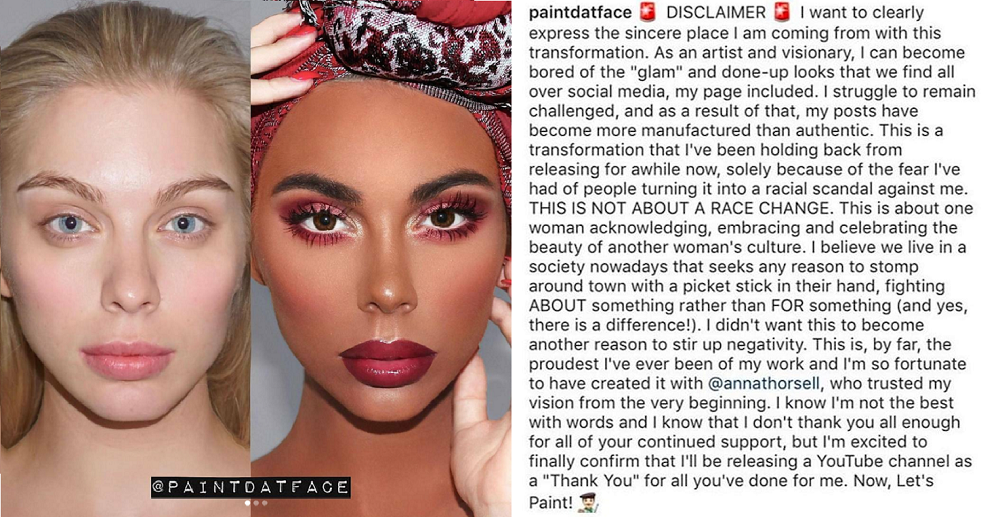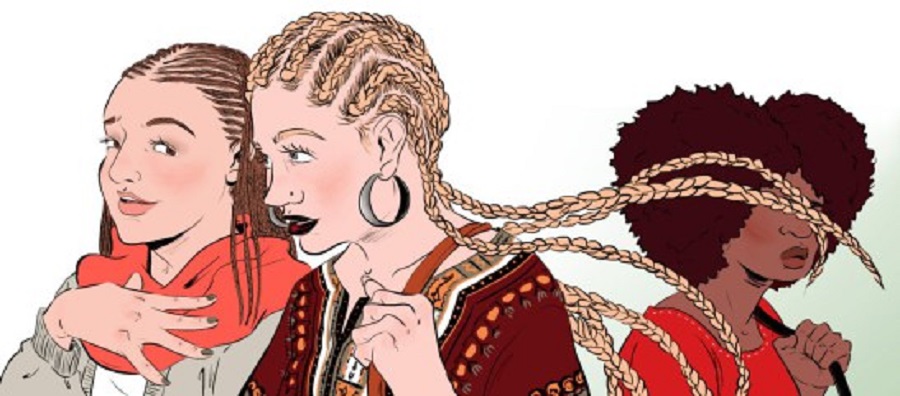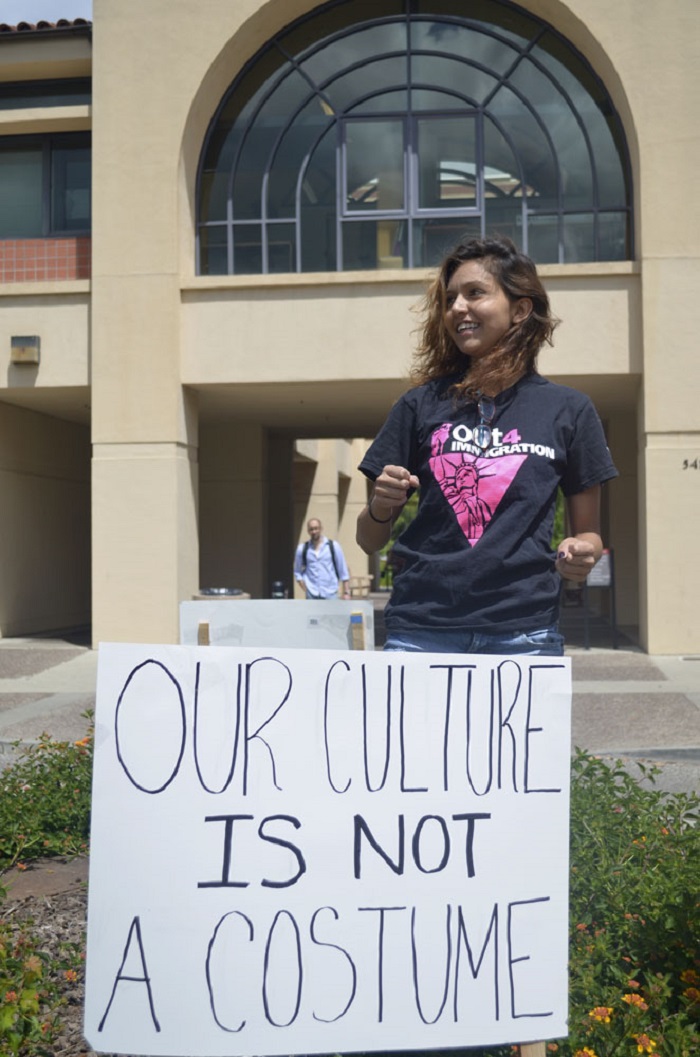A makeup artist received backlash after posting a controversial transformation on the Instagram account. The artists posted a picture of a white woman he transformed into a black woman using makeup.
People were not having it and called him out for blackface and cultural appropriation. The artist hasn’t issued an apology yet, he deleted the picture though.
Makeup has its limits, and this is clearly off the limits
Makeup is an amazing thing that helps us do transformative things. Nowadays, the Internet is flooded with amazing transformations that widen people’s eyes, plump the lips and so on.
However, a thing it isn’t typically designed to do is to make people look as if they’ve changed their race. And that’s exactly what a makeup artist on Instagram did.
A Los Angeles-based makeup artist who goes by @paintdatface, recently posted a post a side-by-side photo of a white woman he’d transformed into a black one. The left image showed a bare-faced Caucasian model, while the left one was of the same model wearing foundation shades darker than her complexion and a head wrap.
In order to achieve the transformation, he used dark foundation giving the white model darker eyebrows and so on. The model also used darker contact lenses, lipstick which created the illusion of fuller lips. The look included a headwrap which is an accessory not usually associated with Western culture.
The artist clearly anticipated the backlash and posted a disclaimer along with the picture. It stated that the transformation wasn’t about a “race change” but rather was “about one woman acknowledging, embracing and celebrating the beauty of another woman’s culture.”

People clearly were not having it and took to social media to express their angst, accusing him of blackface and cultural appropriation.
Following the backlash the artist deleted the posts, however, he didn’t issue an apology and continued to defend his choice. He said, “This is, by far, the proudest I’ve ever been of my work.”
“Although I am saddened by how many people are angered, I can’t offer an apology for my artwork and for what I find to be beautiful. The transformation came from a place of love,” he said.
https://twitter.com/SheilaPThatsMe/status/868839737712181249?ref_src=twsrc%5Etfw&ref_url=http%3A%2F%2Fwww.ajc.com%2Fnews%2Fmakeup-artist-accused-blackface-for-turning-white-woman-into-black-one%2FvrH7phrbn8nr93RFuJo7fK%2F
https://twitter.com/ArtsyPoet/status/868782421218643968?ref_src=twsrc%5Etfw&ref_url=http%3A%2F%2Fwww.mirror.co.uk%2Fnews%2Fweird-news%2Fmake-up-artist-gives-woman-10526831
Let’s talk about cultural appropriation
According to @paintdatface, he meant no harm when he performed the controversial transformation, as he stated his artwork was “about one woman acknowledging, embracing and celebrating the beauty of another woman’s culture.”
And this is just part of the problem regarding cultural appropriation. For most, imitation is not the sincerest form of flattery in this instance. Often imitation leads to stereotyping, which makes things even worse because often stereotypes are formed on sided and partial understanding of the other. If you’re celebrating a culture, then you should at least try to understand it.
The cultural appropriation conversation has been going on for a few years now, and it’s frankly a much-needed conversation.
According to the Cambridge Dictionary is “the act of taking or using things from a culture that is not your own, especially without showing that you understand or respect this culture.”
Everyday Feminism, staff writer Maisha Z. Johnson points out an important aspect of this issue, defining it further as “the power dynamic in which members of a dominant culture take elements from a culture of people who have been systematically oppressed by that dominant group.”
The truth is cultural appropriation makes clear the imbalance of power and opportunities in different aspects of society. Whenever a white artist uses aspects of a different culture, whether is Black, Asian or indigenous, is celebrated for going further and being inclusive.
However, when a Black artist displays his or her own culture, it’s the other way around. Not only there’s no celebration but is not widely accepted and even shamed.
This evidences the inequality surrounding it. Opportunities for minorities to express and celebrate their culture and creativity. aren’t the same and that’s a shame.

Change the conversation
The appropriation conversation is not and shouldn’t be that white people cannot wear cornrows or hoop earrings. The conversation is about bringing awareness of the inequalities and take action on it.
The goal is to make things fairer both on a cultural and economic level. Is about leaving behind cultural appropriation to make room for cultural exchange. And for that, both cultures need to be on the same play level.
Making things fair on a cultural level means correcting incorrect narratives of groups of people or preventing them from being mischaracterized in the first place.
To do things fair, we have to commit collectively and individually and analyze our ways in both cases. Collectively, we should ask if in our environments we truly see if they really reflect the face of the population, and if not, why not?
Individually, we gotta acknowledge our biases and wonder why do we think this way, and challenge them in order to understand them and eventually leave them behind.
There’s a place for all to embrace, accept and respect each other. And also celebrate each other.

Source: Seventeen


